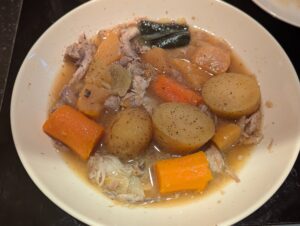Pork and Root Vegetable Stew with Miso (Instant Pot)

When colder days start settling in, some of the foods my mind starts going around to are always pork and the new season root vegetables.
Within my family, I (Gen X) did grow up a couple of generations down the line from fall hog butchering being a regular annual thing. It’s not an unusual pattern in the region, and across a lot of the not-so-urban US. My Nana and Grandaddy still lived in the country, but they were no longer raising any animals by the time I came along. When I was a kid, though, they would still buy a whole hog every year from some friends who were actively farming. So, I got to take part in some of that tradition, and eat the proceeds! One of the things that needs to be eaten up pretty quickly is bonier cuts which weren’t traditionally as easy to preserve.
But, even not growing up with it directly herself? Every year, one of the things my mom had to fix was a big batch of slow simmered neckbones and/or ribs with turnips. The rich broth was hard to beat. We also usually got dishes of them cooked with pinto beans, and sauerkraut.
There was enough German immigration way back into our part of Appalachia, down the existing Native trade route which I-81 would follow later on, that even if some names got pretty mangled over time? They brought in some really good food, for a decent bit of regional culinary influence. The versions that I grew up on were not too far from this Pennsylvania Dutch Pork And Turnips.
But, this would also seem to be another of those cases of Northern European variations on a theme: seasonal pig parts that need used up quickly, at the same time that root crops are really coming in. Back home, there was already plenty of influence from Scotland and Ireland in particular, which brought the turnips and the hogs. And, here in Sweden, where root vegetables have long been a major staple? You can easily find recipes like this Gammaldags köttsoppa (“Old-Timey Meat Soup”)–though, this particular version is made with beef and root veggies–or this Kålgryta med revbensspjäll (“Cabbage Stew with Ribs”), which obviously uses leafy cabbage instead and sounds delicious.
The thicker cut, meatier revbensspjäll was what I was originally wanting to use here. But, the store was out when I went to get it. So, I decided to make do with a combo of spareribs and the remaing piece of bone-in fläskkarré that we had stashed in the freezer after those oven barbecue pork chops.
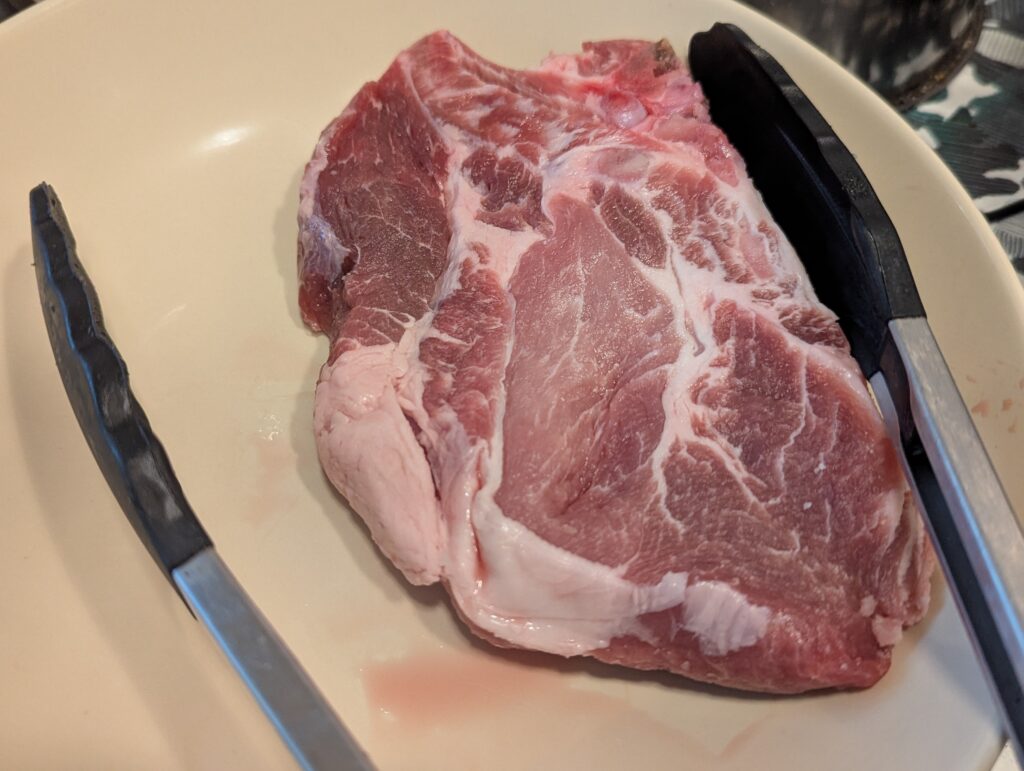
I also didn’t see white turnips that day, disappointingly–though they do seem easier to find locally than around London. So, we’re getting rutabaga/swede/kålrot (“cabbage root”), which will do.
The ingredients here are pretty simple.

The jar in the background is homemade miso, beside some of the Swedish yellow peas it was made from for a more local touch. This was the first time I cooked with my inaugural attempt at miso, and it went well. The next batch of miso I put together, I will post. For seasonings here, I drew some inspiration from Tonjiru, a delicious and hearty Japanese pork and vegetable soup flavored with miso, which tends to include root vegetables common there.
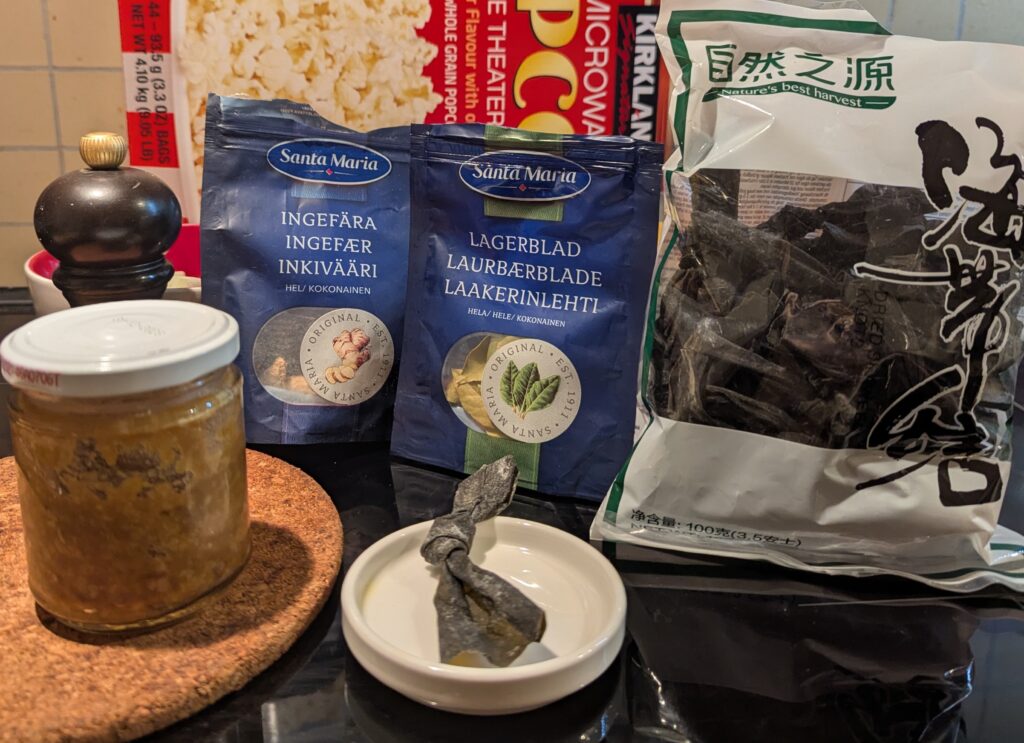
We’re keeping it pretty simple here. Besides a smaller jar of miso that I scopped out for the fridge, we’ve got some bay leaves, pepper, a piece of kombu seaweed for richer umami flavor in the broth, and some dried sliced ginger because I was out of fresh.

We’re going fairly subtle here. The meat and veggies are going to be the major players.
You can cook this entirely on the stovetop, but it will take at least a couple of hours to get the meat falling-off-the-bones tender before the veggies go in. A Crock Pot would also work well. Here, I opted to use the pressure cooker instead, for a much shorter cooking time.
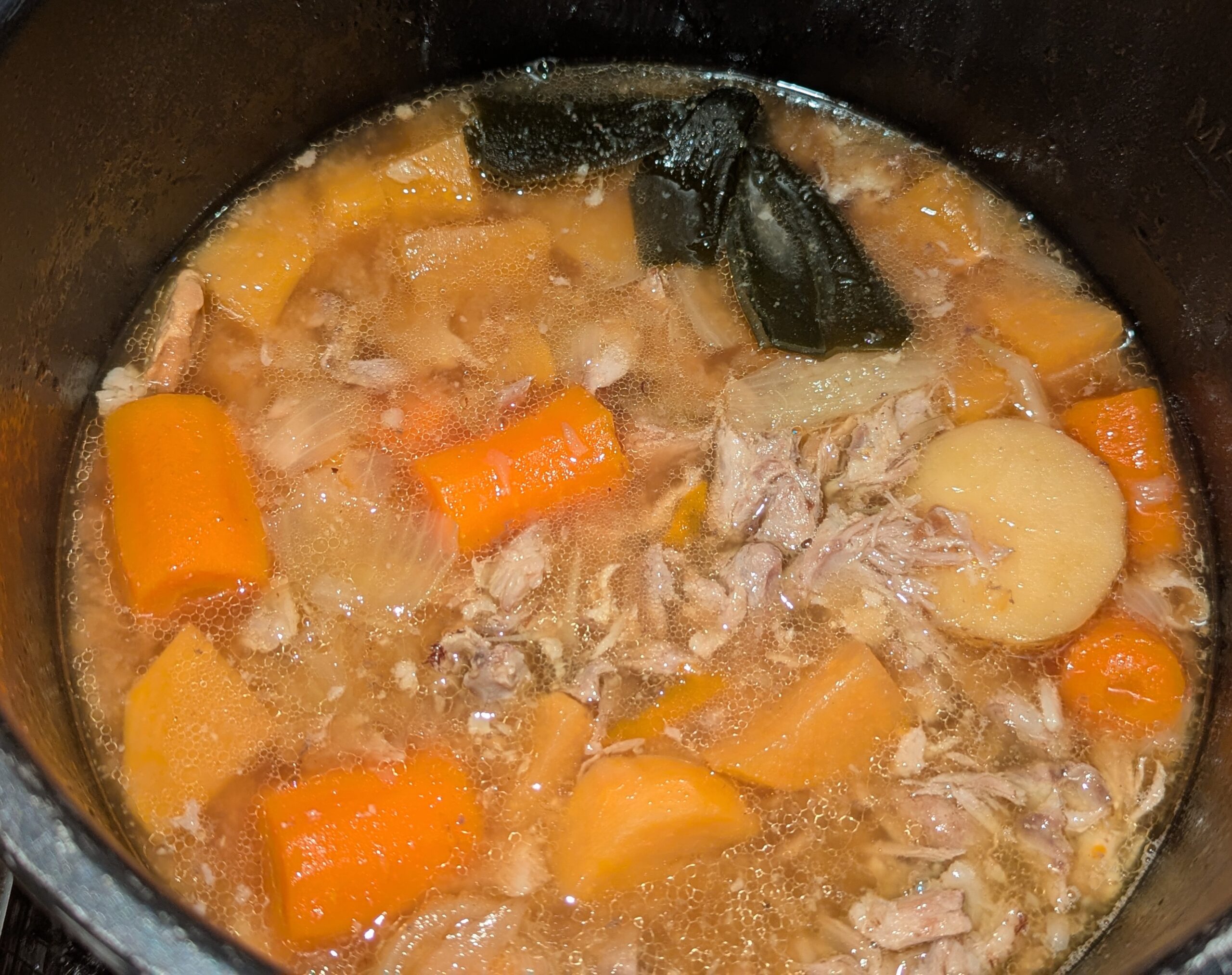
Pork and Root Vegetable Stew with Miso (Instant Pot)
Ingredients
Method
- Making The Rich Pork Broth
- This will make 2L of broth, where we will be using half of that here.If you only want enough broth for this pot of stew, reduce the quantities accordingly.
- Set the pressure cooker to "Brown/Saute Low", and add the tablespoon of oil.Sear the meat on both sides. Tongs are very handy to move it around.
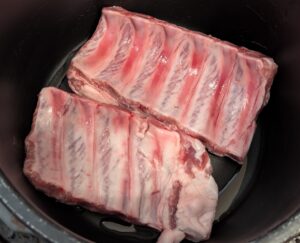
- Sear in batches if you need to, and keep aside until it's all done.

- When that's done, return it to the pot and add the water and salt.
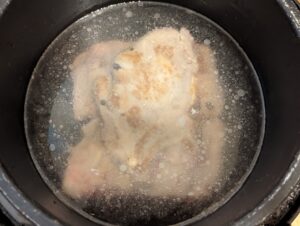
- Pressure cook on "Manual – High" for 25 minutes.This is a good time to prep the vegetables.When the meat finishes, let the pot sit for 15 minutes before touching the valve.
- Pull the meat out and set it aside to cool enough to pull the bones out. I pulled them loose with the tongs while it was still very hot.
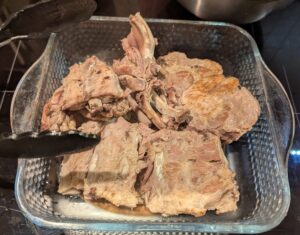
- Optional: Return the bones to the broth pot, and pressure cook for another 15 minutes. Let the pressure natural release for 10-15 minutes again before opening the valve.
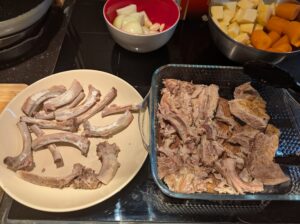
- Pour the broth through a strainer into another pot, and clean the pressure cooker's inner pot.
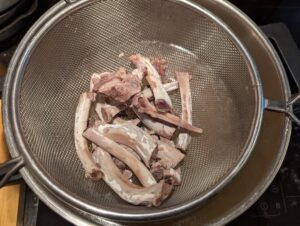
- The finished broth is ready. I'm saving half of it to use later, as detailed in the earlier chicken broth recipe.

- My reserved broth for later.

- Wash, peel as desired (these potatoes didn't need it), and cut the vegetables into fairly large chunks which should take roughly the same cooking time. I went for bigger than bite-sized, which is pretty traditional in similar dishes where I'm from.
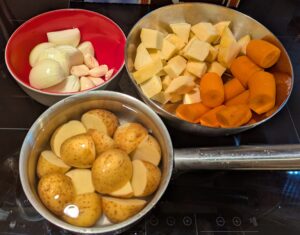
- Quarter the onions, or cut them into sixths if they're bigger. Lightly smash the garlic cloves with the flat of a knife, to slip the skins off.
- Heat another tablespoon of oil in the pressure cooker on "Brown/Saute". Mine heats very hot on high, so again I used the low setting.Add the onions and garlic. Stir fry them around for a few minutes, until they just start getting some color for the extra flavor.
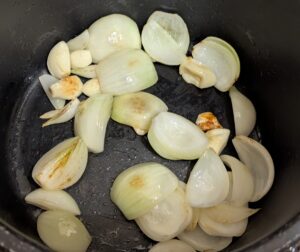
- Add in the rest of the chunked vegetables and the stew seasonings.

- Take part of your broth into a smaller pan or bowl, and rub 2-3 tablespoons of miso into it through a strainer.Use enough now to give a slightly salty taste for cooking the vegetables. We are depending on the miso for much of the salt in this dish, but more will go in later for the more complex flavor. (So, keep the semall pan and strainer to the side to use again.)How much you need will depend a lot on the miso you're using and your personal taste. Yuto Omura goes into more detail about good miso choices for a soup similar to this here.

- Cover with all the (1L or quart) of broth. If it doesn't quite reach the top of your vegetables, add a little extra water as required.
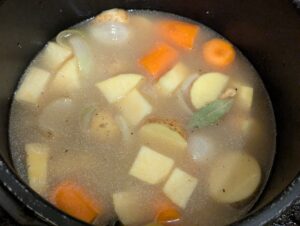
- Pressure cook on "Manual – High" for 10 minutes. Let the pressure natural release for 15-20 minutes again before opening the valve.
- Add the bite-sized chunks of reserved meat into the stew, and let simmer for a few minutes.

- Taste the broth for seasoning, and carefully pour some broth off to add more miso to adjust the flavor.

- Gently stir up from the bottom a bit as you serve, because the miso particles tend to sink to the bottom of the pot.Grind more pepper over the top of your bowl as desired.Serve with some bread if you like, and enjoy! This was substantial enough that we didn't need anything else.
